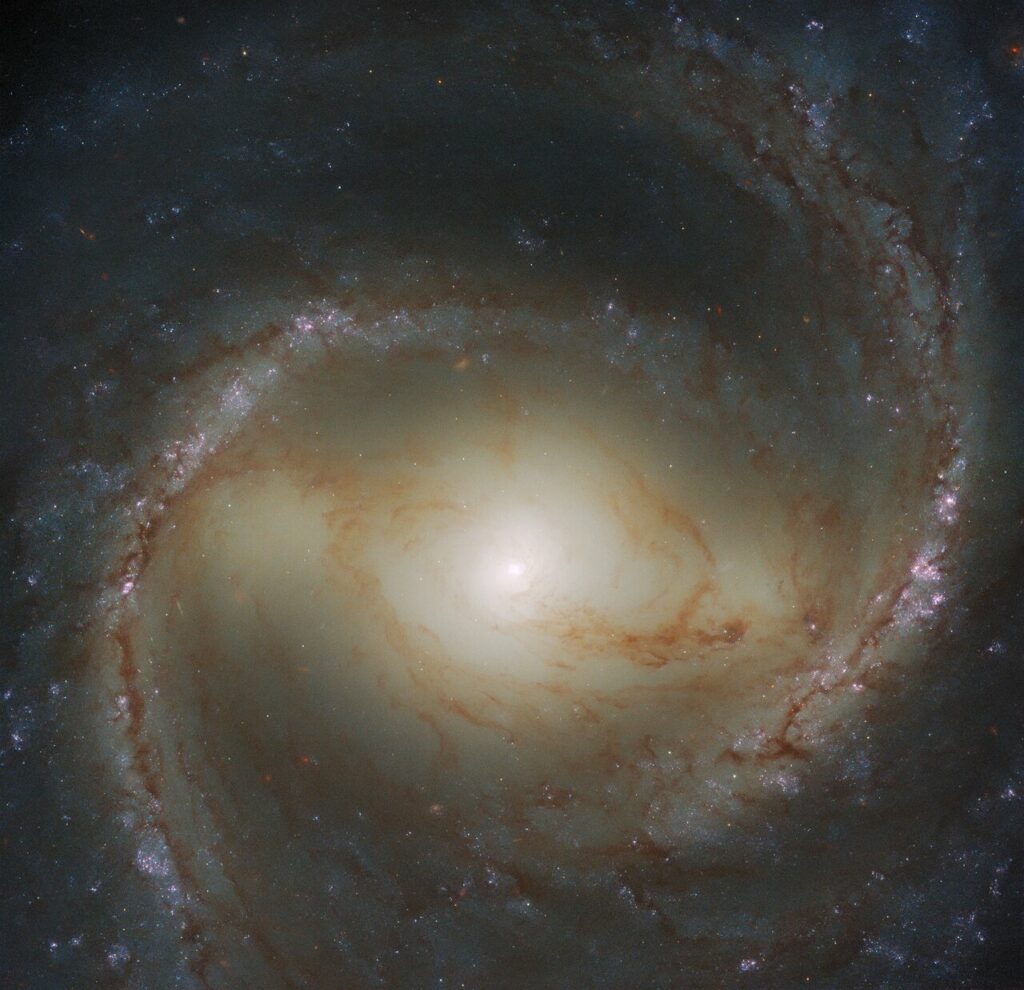The presented image was taken using the WFC3 camera installed on board the Hubble Space Telescope. The photo shows the spiral galaxy M91. This object is located at a distance of 55 million light-years from Earth in the direction of the constellation Veronica’s Hair.

M91 is a galaxy that is often cited as an example. This is due to its relative proximity to the Milky Way, as well as its successful orientation. Thanks to it, we can see in all details the structure of M91 — its central region and the bridge from where the spiral arms strewn with star clusters originate. As in our Milky Way, the core of M91 hides a “monster”: a supermassive black hole, whose mass, according to various estimates, ranges from 9.6 to 38 million solar.
The M91 picture was not taken for beauty. It is part of a scientific program in which, in addition to Hubble, the ALMA radio telescope complex is also involved. Its purpose is to study the relationship between young stars and the clouds of cold gas from which they form. For this, Hubble conducts observations of galaxies in the visible and ultraviolet ranges.
It is also worth noting that Hubble observations are a very valuable and in-demand scientific resource. To be able to use the telescope, astronomers must write a proposal detailing what they want to study and the scientific value of the observations. These proposals are then anonymized and evaluated according to the degree of importance by various astronomical experts. This process is incredibly competitive: after the last call for proposals, only about 13% of applications received Hubble time to conduct observations.
According to https://esahubble.org
Follow us on Twitter to get the most interesting space news in time
https://twitter.com/ust_magazine

